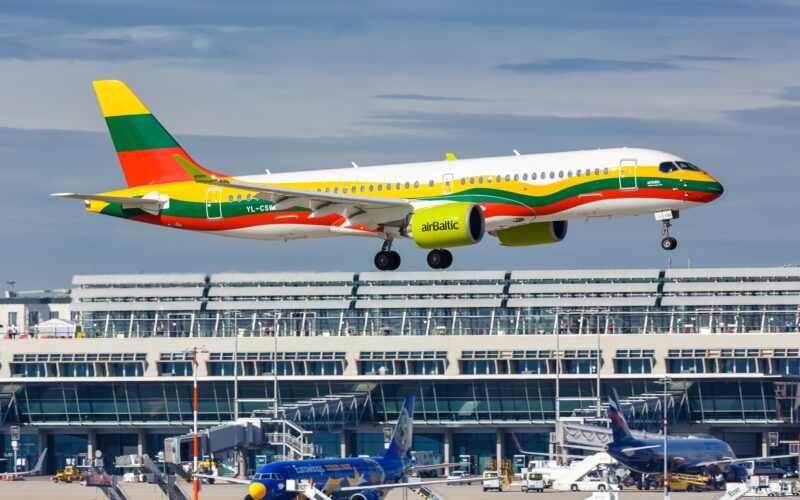Following a dual-engine shutdown on an aircraft with Pratt & Whitney 1500G power plants – used exclusively for the Airbus A220 family – the United States’ Federal Aviation Administration (FAA) issued an Airworthiness Directive (AD) to prevent the shutdown from happening again.
The AD, which is a final rulemaking, was published on December 27, 2022, with an effective date of January 31, 2023.
The dual-engine shutdown occurred as the aircraft landed, compromising the braking capability of the narrow-body aircraft, as the crew lost engine power and the ability to control hydraulic systems.
The FAA did not specify when the event occurred. However, the Aviation Safety Network recorded an incident in July 2021 in which an airBaltic Airbus A220-300, registered as YL-AAQ, suffered a dual-engine shutdown as it landed at Copenhagen Airport (CPH).
According to the FAA, following an investigation into the matter, it determined that “the sequence of the auto-throttle increasing throttle to maintain Mach number, immediately followed by pilot command to decrease throttle to idle, caused a transient disagreement between actual and commanded thrust.” As a result, the disagreement triggered a thrust control malfunction (TCM) detection logic, and the aircraft shut down both engines as soon as wheel sensors detected that the aircraft had physically landed on the runway.
To prevent such a situation from occurring in the future/again, operators will have to remove certain electronic engine control (EEC) full authority digital engine control (FADEC) software versions and replace them with updated software.
“This software update makes corrective improvements to the TCM logic, including revised criteria for triggering the TCM logic and establishing criteria that permit the TCM logic to unlatch during flight,” concluded the FAA.
Air Line Pilots Association, International (ALPA) was the only party to comment on the directive, wholeheartedly agreeing with the change.
The government agency estimated the software update would take two hours at a cost of $170 per aircraft. Since the AD affects 147 engines that are equipped on aircraft that are registered in the US, the FAA estimated the total cost for operators in the country to be $24,990.

